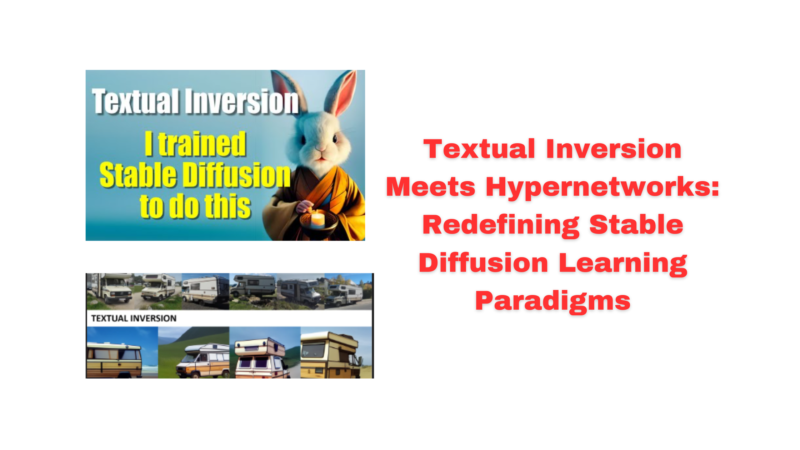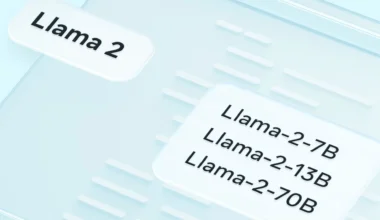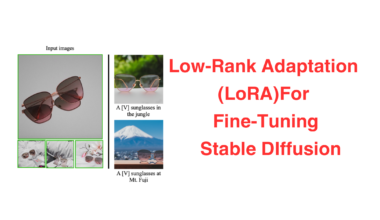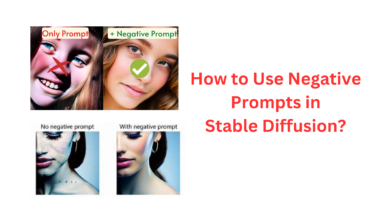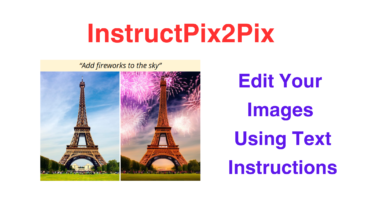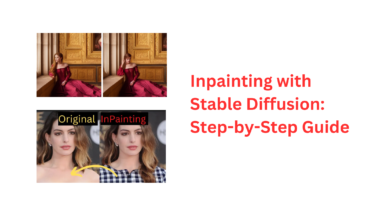In the realm of creative AI, the innovative technique known as Textual Inversion has emerged as a powerful tool, enabling the extraction of novel and imaginative concepts from a limited set of sample images. This process holds the potential to revolutionize the way we interact with AI models, allowing us to convey descriptive language to AI systems for a deeper understanding of the world around us.
By seamlessly integrating inventive concepts into text prompts, Textual Inversion enhances AI’s artistic prowess and empowers it to create personalized images based on our creative ideas. This paradigm shift is not just limited to latent diffusion models; it gracefully extends to stable diffusion and other variants, ushering in a new era of visual creativity.
Through this article, readers will explore the mechanics of Textual Inversion, its integration within Stable Diffusion, and the intricate interplay between text encoders and diffusion models that underpins the generation of captivating visuals. will gain practical insights into implementing Textual Inversion and Hypernetworks, covering everything from installation to real-world applications such as style transfer and bias reduction.
What is Textual Inversion?
Textual Inversion is the extraction of novel and distinctive concepts from a small collection of sample images. This technique was first demonstrated using latent diffusion models, but it has gracefully expanded to include other model variants like stable diffusion. The learned ideas advance to the next level, improving the ability to create visuals out of words.
In the embedding space, it’s similar to adding new “words” to the vocabulary of the text encoder. These words, our inventive concepts, seamlessly integrate into text prompts and use AI’s artistic flare to create personalized images.
Imagine imparting your descriptive language to an AI model so it can understand the world. Textual Inversion, a brilliant technique that allows us to add new styles or objects to text-to-image models without changing their fundamental structure, comes into play here.
The secret lies in creating a fresh term that encompasses the idea you wish to illustrate, followed by locating the “embedding vector” that corresponds to the language model. This vector acts as a kind of magic wand, enabling the model to produce visuals depending on your creative ideas.
Consider creating a painting of a “chef preparing a feast in a bustling kitchen during a culinary competition.” Instead of making changes to the model’s programming, you add a new keyword, like “culinary-showdown,” and reveal the mysterious embedding vector that lives inside. Textual Inversion resides in the interesting world of Stable Diffusion.
Explore the Stable Diffusion universe while you’re at it and become familiar with ControlNet using Stable Diffusion, a magical environment that enhances the magic. This article guides you through the creative process, showing you how Textual Inversion gives AI’s visual abilities a creative spin.
How does Textual Inversion Work?
The described procedure uses a text encoder model to transform input prompts into embeddings. These embeddings control how a diffusion model behaves. The first step in the procedure is to tokenize input prompts into index tokens in accordance with a predefined dictionary. The text encoder is then used to create embeddings using these tokens. Each token corresponds to a distinct embedding vector that may be retrieved using an index-based lookup.

As evident, Figure 1 further shows that this method entails tokenizing input prompts into a collection of tokens that serve as an index in a predetermined dictionary before putting these tokens through a text encoder to produce embeddings. Together with the latent image input and the time steps (t), these text embeddings act as guidelines for a downstream UNet model.
The production of various visuals is made possible by the manipulation of the token embeddings to represent various objects or concepts. By integrating a new token into the vocabulary and training with representative images, textual inversion includes learning new word embeddings that are closely linked to visual representations. As a result, concepts are embodied in embedding vectors.
A placeholder string (referred to as S*) is used in textual inversion to introduce new concepts. An embedding (v*) that was newly learned and associated with S* is used to replace the existing token’s vector. This makes it possible to inject new vocabulary concepts. The pseudo-word is handled in the same way as other words, which makes it easier to create novel textual prompts for generative models. The base generating model does not change. It is made easier to create images from prompts like “A photo of S*,” similar to traditional prompts like “A photo of a cat,” by outlining the process of text inversion.
Inversion is used to describe the task of creating embeddings for these pseudo-words. A set of concept-representing images and a pre-trained text-to-image model are used in this process. Finding a word embedding that makes sentences like “A photo of S*” lead to image reconstruction is the goal. This embedding is created using a process of optimization called “Textual Inversion.”

The goal of textual inversion is to facilitate prompt-guided production of novel concepts. A pre-trained text-to-image model’s intermediate representation contains these notions. Basic image semantics can be efficiently captured by this embedding space. In the framework of Latent Diffusion Models (LDMs) and Denoising Diffusion Probabilistic Models (DDPMs), the Textual Inversion approach is used.
An autoencoder and a diffusion model make up LDMs. The diffusion model denoises the latent codes that the autoencoder creates by translating pictures into latent codes. Correct noise removal is ensured by the loss function. A modest collection of concept-representing images is used in textual inversion to discover new embeddings. An optimization method minimizes the LDM loss over these images to get the appropriate embeddings. Neutral context texts are used for conditioning during generation.
In conclusion, the suggested method creates novel concepts for image production by utilizing text embeddings and inversion. This entails manipulating embeddings, introducing new tokens, and optimizing embeddings through a defined loss. The method is used in Latent Diffusion Models and the embeddings it produces capture distinctive visual characteristics of new concepts.
Where to Put Textual Inversion in Stable Diffusion?
After successfully obtaining a textual inversion file, the next step is to place the textual inversion file correctly within your system. The recommended location for storing this file is as follows in case you’re using a tool like AUTOMATIC1111’s Stable Diffusion WebUI:
*\stable-diffusion-webui\embeddingsIt’s essential to keep in mind that the textual inversion file’s format needs to comply with the requirements of the particular tool you’re using. File extensions like *.pt or *.safetensors are frequently associated with textual inversion files. If your file uses a different format, you might need to perform a preliminary conversion to make sure it is compatible.
As an illustration, if you have a text inversion file addressing the concept of “celestial paintings,” you should place it in the embeddings folder. Therefore, you can write a text prompt like “Generate an image showcasing celestial paintings” when you want to create a picture that is inspired by this particular concept.
How many Images for Stable Diffusion Textual Inversion?
The textual inversion technique has proven to be effective by accomplishing its goal with as few as 3-5 reference images. By utilizing natural language sentences to generate original “expressions” within the model’s embedded space, this technique makes it easier to generate information that is specifically tailored to each user. Amazingly, a single-word description can frequently encompass a diverse range of unique concepts.
Consider the example of having to create an image of a “majestic mountain peak.” The model is enabled to understand the meaning of this topic by using a few sample images exhibiting distinct mountainous environments. Creating a text prompt that reads:
Sample Prompt: "Craft an image featuring a majestic mountain peak."
By including these illustrative cues, the model is able to recognize the intended concept and then create visuals in line with the given instructions. Even though textual inversion only uses a small number of example images to demonstrate how efficient it is, the output can be greatly impacted by the quality and variety of these images. The model’s ability to produce accurate and creative images can be greatly improved by using a larger and more varied dataset.
What are Hypernetworks?
Innovative methods are continually being developed in the field of creative AI to enhance both the quality and variety of generated content. The use of hypernetworks in conjunction with stable diffusion models is one such innovative strategy.
In contrast to their more traditional machine-learning counterparts, hypernetworks act as a fine-tuning tool intended to add a particular aesthetic or style to the generated content. This method was created by Novel AI, one of Stable Diffusion’s early adopters, and has earned notoriety for its smooth modification of the complex cross-attention module of the noise predictor UNet inside the Stable Diffusion framework.
The heart of the hypernetwork concept is a small neural network that is strategically
placed to improve the visual appeal and style of outputs produced by stable diffusion. The current version enhances the key and query vectors of the cross-attention module, in contrast to standard hypernetworks that produce weights for another network.
The basic yet effective linear network architecture of the hypernetwork cleverly takes advantage of its ability to impact the transformation process without changing the fundamental structure of the Stable Diffusion model. Hypernetworks provide a flexible way to direct generated content towards a particular topic or aesthetic by enabling the alteration of keys and values, hence expanding the Stable Diffusion’s creative potential.

Hypernetworks are characterized by their effectiveness in resource utilization and training. The hypernetwork is permitted to adapt during training while the Stable Diffusion model is fixed. Due to this dynamic’s quick training cycles and minimal computing resource requirements, training may be carried out using conventional hardware.
A fascinating alternative to techniques like Textual Inversion /Embeddings and LoRAs (Learned Optimizers with Random Architectures) is provided by hypernetworks. While LoRAs are favoured for their improved results, users frequently discover that the addition of hypernetworks gives the created results a particular edge, moving them closer to the desired aesthetic.
Therefore, Hypernetworks are a testament to the power of combining advanced methods like Stable Diffusion with efficient neural network topologies in a field that is continually looking for new ways to enhance creative expression. With the advantages of efficiency and creative control combined with their capacity to carefully adjust essential model components, hypernetworks are positioned as a possible route for influencing AI-generated content. The innovative combination of stable diffusion and hypernetworks is unquestionably a compelling step toward reaching unmatched artistic synthesis as the AI landscape continues to change.
How to Use Hypernetworks?
I will explain how to use hypernetworks in the GUI for the AUTOMATIC1111 Stable Diffusion. Whether you’re using Windows, Mac, or Google Colab, this instruction will show you how to complete the task.
Step 1: Installing a hyper network model
You must place the model files in a specified location in order to integrate hypernetwork models into the AUTOMATIC1111 web interface. Take these actions:
stable-diffusion-webui/models/hypernetworks(i)Find the stable-diffusion-webui directory’s “models” folder.
(ii) Make a “hypernetworks” subfolder inside the “models” folder.
(iii) Put the model files you need in this “hypernetworks” subfolder.
Step 2: Use a hypernetwork model
Ensure the correctness of the filename by clicking on the model button located below the main “Generate” button. Put the following phrase in the prompt to use a hypernetwork.
<hypernet:filename:multiplier>The filename is the hypernetwork’s file name, excluding extensions (such as .pt ,.bin, etc.).
The weight given to the hypernetwork model is called multiplier. 1 is the default and the model is turned off when set to 0.

Proceed by navigating to the Hypernetworks tab, where a selection of installed hypernetworks will be displayed.
Choose the desired hypernetwork, and this will automatically insert the appropriate hypernet phrase into the prompt.

It’s important to note that the hypernet phrase is not treated as an integral part of the prompt; instead, it serves as a directive to specify which hypernetworks to utilize. After the hypernetwork is applied, this phrase will be removed. Consequently, it’s not possible to combine the hypernet phrase with prompt syntax such as [keyword1:keyword2:0.5].
Step 3: Testing the model and producing art using it
Start by utilizing it with the model it was trained with to increase your chances of success in unlocking the desired style. Don’t stop there though. Check out the prompt examples on the model page to discover what works best as certain hypernetworks only accept certain subjects or have special prompt requirements.
And here’s an expert tip: if your image appears to be a little too saturated, you may
need to adjust the multiplier. It’s simple to fix. Colour saturation can occasionally be seen by Stable Diffusion as the ideal way to hit the target, however lowering the multiplier can assist in restoring balance.
Some Examples of Textual Inversion
In this section, we will discuss several instances and applications that demonstrate the use of textual inversion. Some of them are as follows:
Style Transfer
This situation demonstrates a very typical use of textual inversion, where a user has the power to emulate the distinctive artistic style of a specific artist and utilize it in original works. The Textual Inversion model also makes it possible to recognize pseudo-words that stand for an unknown but distinctive writing style.
It is important to emphasize how this approach differs noticeably from conventional style transfer techniques by providing the model with a small collection of images bound together by a common style and replacing conventional training texts with stylistic indications like “A painting in the style of S*.”

Image Variation
Utilizing Textual Inversion, it becomes feasible to generate diverse variations of an object by employing just a single pseudo-word, as exemplified in Figure 5. This technique adeptly captures finer details of the object through the utilization of a single word embedding.

Concept Composition
It is observed that the model can concurrently reason over multiple novel concepts or pseudo-words at the same time, but it fails to place two concepts side by side for the simple reason that the training samples only contain images from one concept. Textual Inversion can also be used for compositional synthesis where multiple learned concepts are used in the guiding text.

Text Guided Synthesis
With the help of newly learned conditioning texts and taught pseudo-words, textual inversion can be used to construct novel scenarios. The generated visuals in Figure 7 demonstrate how new scenes can be produced by utilizing the semantic ideas in the pseudowords and fresh conditioning texts. A single pseudo word can be utilized for numerous generations because the model is built utilizing a large-scale, pre-trained text-to-image synthesis model.

Downstream Applications
The pseudo-terms derived from textual inversion can be employed in subsequent models that rely on the same latent Diffusion Model. One such instance is the concept of Blended Latent Diffusion. This approach involves localized textual edits applied to images through a process of mask-based blending. This can be conditioned by incorporating the learned pseudo words, necessitating minimal modifications to the original model.

Bias Reduction
The training data that was utilized to train them results in biased images when text is converted to images. Therefore, as seen in Figure 9, similar biases are also present in the samples that were generated. As can be observed, by adding a more inclusive dataset and producing a more inclusive generation, textual inversion helps lessen bias in training datasets.

Takeaways
We learnt how textual inversion extracts creative concepts from images using embedding vectors, the complete process, its and understood its integration with stable diffusion. We also included a step-by-step guide to integrating and utilizing hypernetwork models in AUTOMATIC1111 Stable Diffusion
As AI’s creative potential continues to expand, the fusion of Textual Inversion and Stable Diffusion sets the stage for a new level of artistic synthesis. We also delved into the revolutionary concept of Hypernetworks, fine-tuning AI-generated content’s quality and style within the Stable Diffusion framework. Readers
